Clearly I have the willpower of a small amoeba. I write about something on here, but then I don’t just walk away, oh no. I only have to go and buy it. Like, say, Motif, which I wrote about only last week.
The good news is that we didn’t get the whole set of thirteen for £650, just two for rather less than that. One of which is the one above. But it’s the right one, because it has the shopfront illustrations in it. And they are, frankly, brilliant.
That’s my favourite, not just because it is utterly bright and enticing, but also because I used to go there, sometimes, in my London days. And look at the little dog peering out of the door. But the other illustrations are just as wonderful too. Here is Cooks Fruiterers in Brighton.
Pretty much all I can tell you about them is that they’re by John Griffiths. Here’s his title page for the set.
Now the style of these Decorative Drawings isn’t entirely surprising. They could sit quite happily alongside the work of David Gentleman and Roger Nicholson from about the same time, as well as John Minton too; each part of the same neo-Romantic version of Britain in the 1950s.
And in their love of the myriad heaps of objects to be found within British shops – here cooks’ striped aprons and white jackets for waiters – these drawings have obviously been born out of Eric Ravilious’s High Street.
At the same time, though, Griffiths is very much doing his own thing. This isn’t a representative High Street, rather a celebration of architecture and idiosyncracy.
In his championing of Victorian and Regency architecture, Griffiths is very much ahead of his time, along with pioneers like John Betjeman.
But in his eye for the eccentric and quirky, he’s out on his own. There are some great snippets of text accompanying the drawings. The chemist above occasions the following comment:
Pooley the Chemist in Wimbledon Village took over what was a doctor’s house in 1825. The manager almost apologised for the poor display in the windows and said they had lost their best jars in the war. But what they have left are fine enough.
But it’s this which wins hands down, an animal costume shop off St Martin’s Lane.
He assured me it would be easy to change a lorryload of students into a cartload of monkeys. A midget dressed in a bright red jacked with black and white check tights suddenly walked by whilst I was drawing the façade and I did wonder for a moment.
And there goes the midget, off on the right hand side of the picture.
Motif can tell me almost nothing about John Griffiths other than that he was born in 1926 and designed a mural and theatre for the Garden Section of the British Pavilion at the Brussels International Exhibition 1958. Irritatingly, the internet can’t tell me much more. He designed a poster, Rhubarb and Roses, for London Transport in 1965.
As well as quite a few covers for Penguin Books in the late 1950s and early 1960s.
But that’s it. Does anyone else know any more than that? I hope so.
Finally, an extra treat from Motif 3. Reyner Banham is writing about new office blocks in London, including this one for Thorn Electric at Seven Dials. I’ve been past it so many times, but had no idea it was by Basil Spence.
But that, you won’t be surprised to learn, wasn’t what caught my eye. Because here are some posters too, as they were meant to be seen.
Proof, as if any more were needed, that not all posters were ever design classics. Although I think we could do with a few more along the lines of Beer – Best Long Drink in the World!
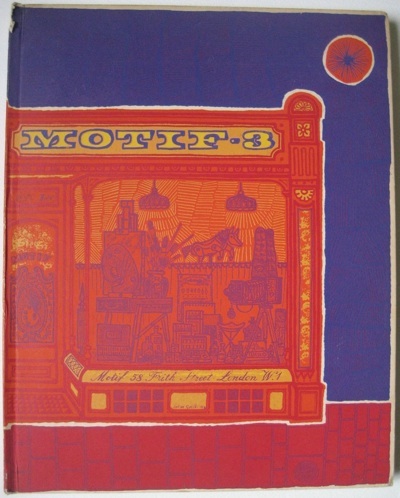
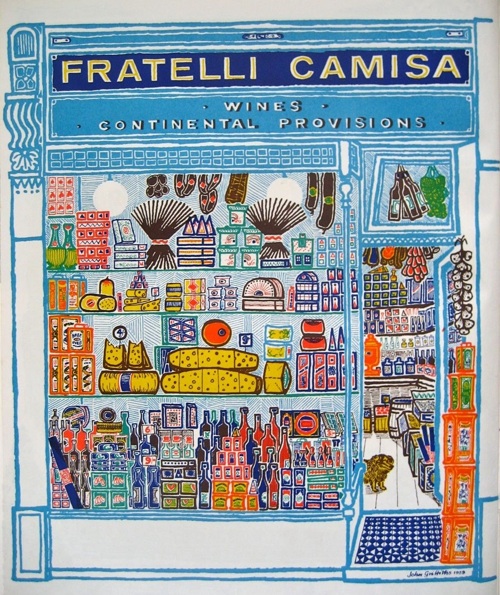
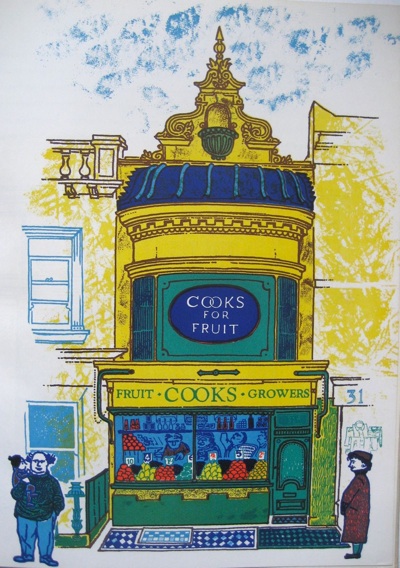
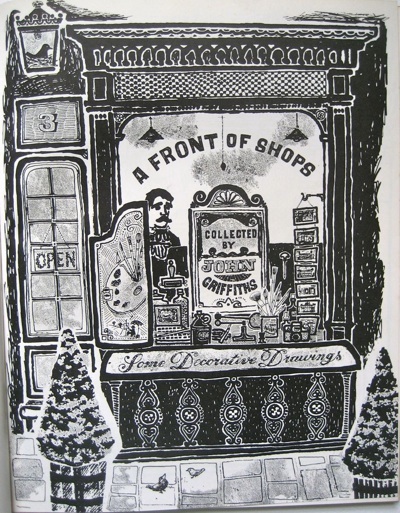
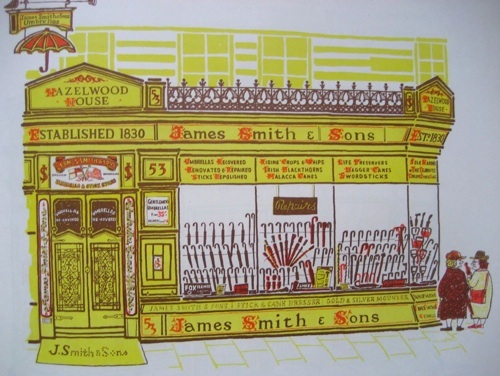
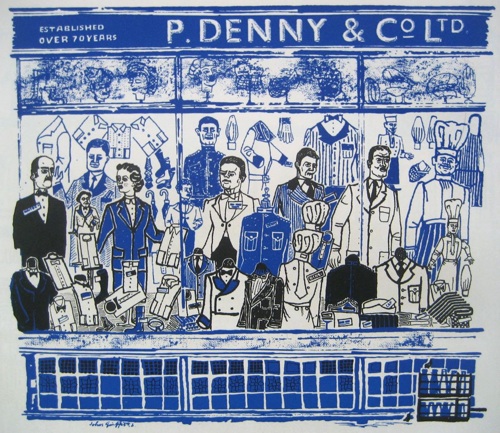
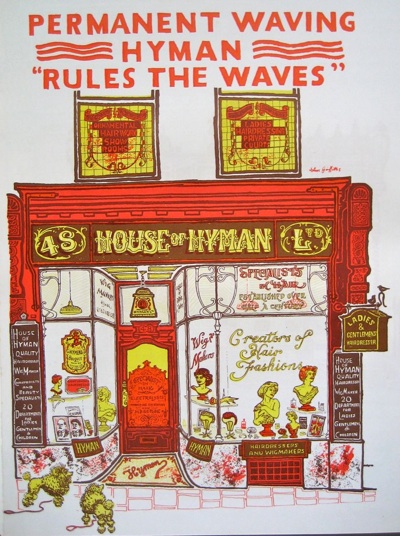
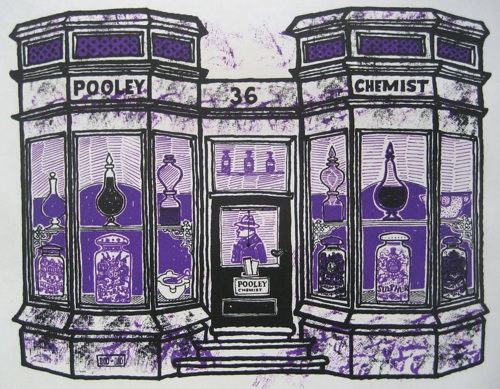
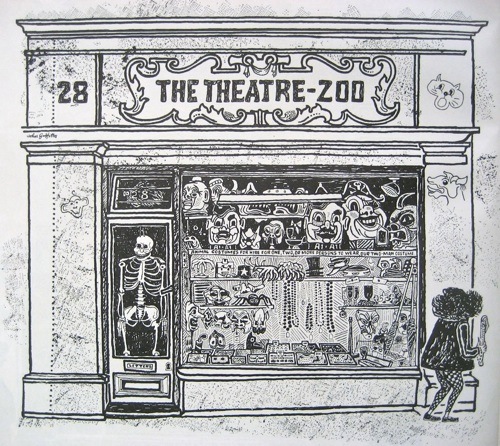
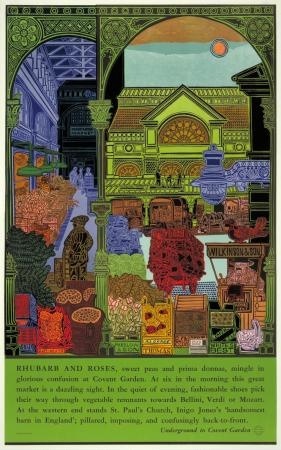
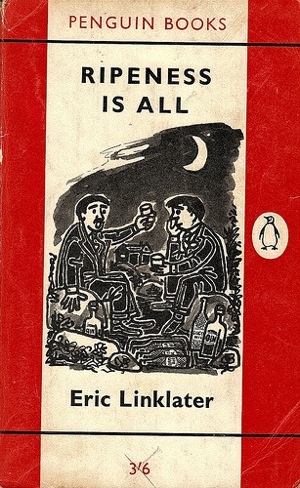
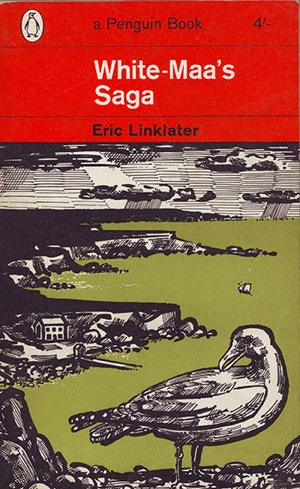
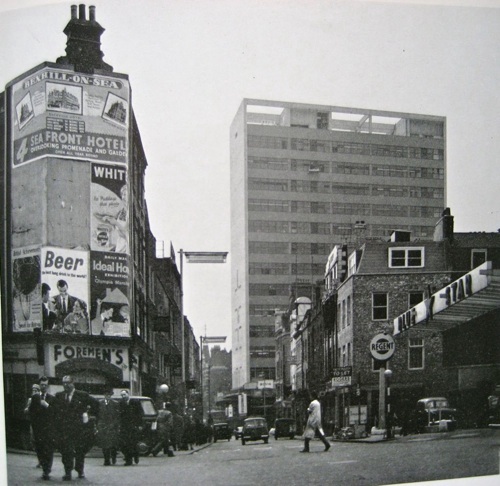
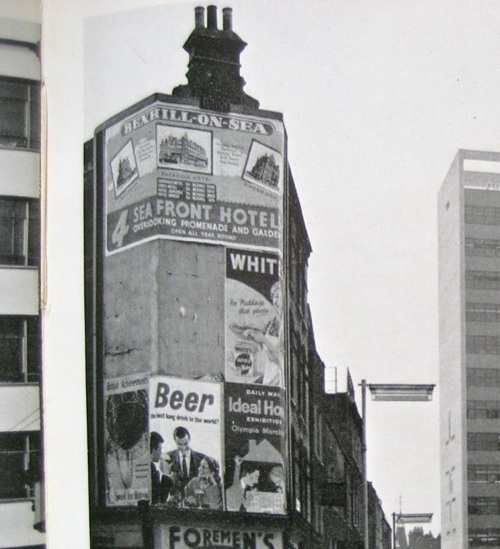
On my many visits to London on my way to spend days sitting in the dark in edit suites I always got a tingle of joy when I passed the magnificent throwback that is James Smith & Sons, umbrella emporium.
It looks just the same today.( Or at least it did last time I looked) .
How it is still in business I will never know but I always wanted to ask the cab to stop as I had a strange desire to buy one. That’s classic design for you.
I used to work in Bedford Square and so walked past it all the time; now I am nowhere near it I really regret not buying a shooting stick or something. I wonder if any of the others have survived?
Fratelli Camisa is still there in some form, and they use a fragment of the illustration on their web site too (http://www.camisa.co.uk/).
I believe the Theatre-zoo place may now be Sheekeys if it’s 28 St Martins Court, which wouldn’t be a bad thing from a sympathetic stylistic shop front perspective….I do like the game of comparing the same locations then and now – it can bring up some utterly bizarre images of change or similarities despite the passage of time
Yes, Sheekeys seems about right for that, doesn’t it.
I’d love to see photographs of all of these sites now, and will happily post them if anyone takes up the challenge. There are a few more clues in the text too, so I think they could all be found.
Fab illustrations – I’m just a short hop from James Smith brolly shop – good to see it’s still going
Hi,
I have just been sent this link by a friend.
I regret to say that my father, John Griffiths, has just passed away. He came from a generation of artists for the whom the base was that you could draw, really draw. You took it from there. As you might guess his first love was printing.
His generation was also (on the whole) a generation who did not “blow their own trumpet”, hence the lack of presence on the web or any where else, it just wasn’t them. Try looking up a friend of his Ken Bale, a quite stunning artist of dad’s generation. Their work leaves many current “artists” far behind but they will remain essentially unknown.
His death is very recent so I while I will correspond as best I can it’s all a bit raw now.
Ed Griffiths
Google’s quite a help in this little game…
http://g.co/maps/5pbdb – Pooley’s the Chemist now an estate agent.
Denny’s on 39 Compton St, Soho, used still to be there (suppliers of catering clothing – and stiff collars) but I cannot find see them with a quick look. And James Smith of course http://g.co/maps/5w654
By the way, your RSS feed for your latest comments looks funny.
One day I will put them up against their modern-day equivalents. Except that it would be just one disappointment after another…
Last year, John Griffiths gave us permission to reproduce his fantastic shopfront illustrations in a magazine we were launching, called It’s all in the delivery. We were shown a copy of Motif by Steve Hare, a colleague and author of John’s obituary in the Guardian. We were immediately taken with the beauty of the drawings and the incredible colours, and were delighted to be able to reproduce them in our magazine. Steve wrote a companion piece, and there’s also a section at the end showing photographs of the modern-day locations. Every time I walk by the umbrella shop I smile to myself – sadly none of the shops has survived in its original condition.
We’re very sorry to hear of John’s passing, and send our condolences to his family.
Mary & Michael, editors of It’s all in the delivery
I came across this website when searching for Pooleys. My father was manager of Pooleys during the war and lived in the flat above the shop. He married my mother in 1943 and they continued living there until early 1947. We tried to find the premises a few years ago, but the numbering seems to have changed so that the present number 36 is in fact to the left of Pooleys as you face the two properties. A look at Kellys directory for 1936, which has a full page advertisement for Pooleys complete with photograph, confirms this. When we visited, the premises were an Italian restaurant. We had lunch at a table upstairs, sitting in what would once have been my parents’ sitting room – very strange.
How fantastic, you must have been so pleased to find it. And he must have been the manager there when all the ‘best jars’ were lost in the war, too.